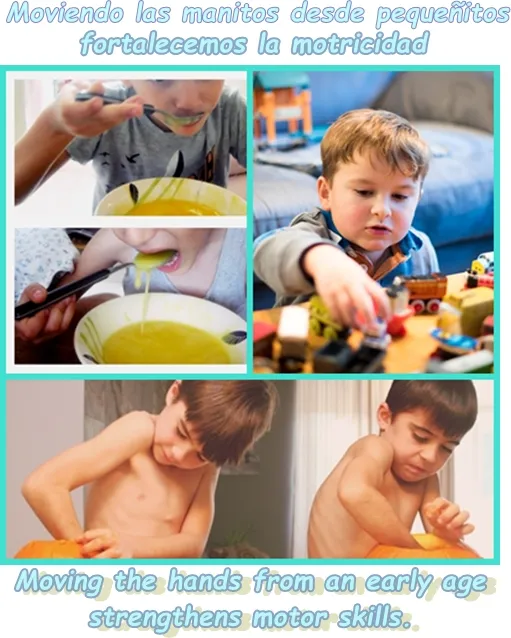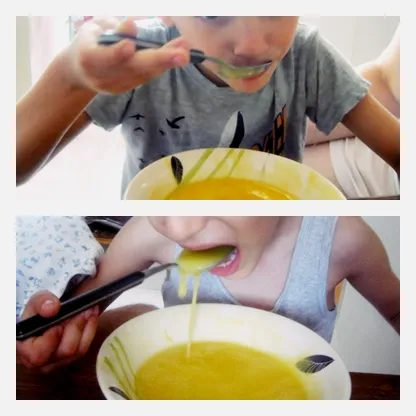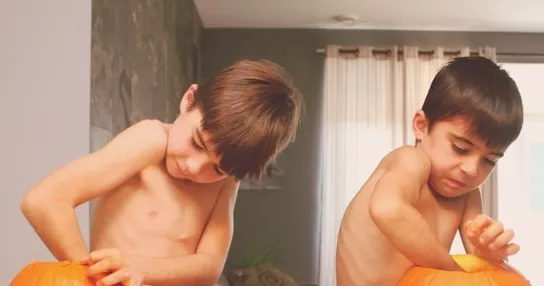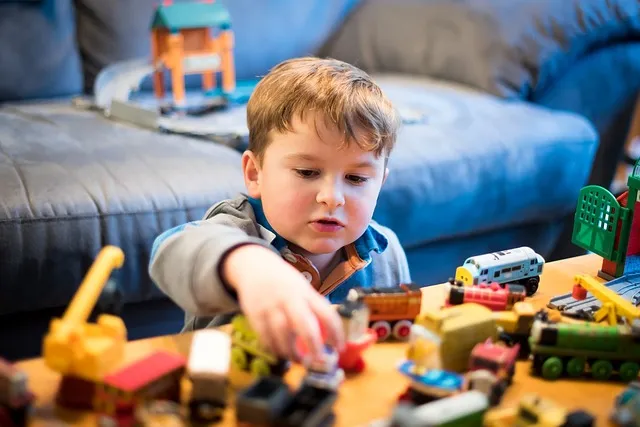Moving the hands from an early age strengthens motor skills.

Hola amigos Especiales!
Hoy les mostraré, como de costumbre, 3 ejercicios sencillos que me ayudaron muchísimo con la toma correcta de la cuchara, el agarre de objetos y el uso de sus deditos como pinzas para escoger . Entonces llamaremos a este primer ejercicio: Agarrando la Cuchara
Hello Special Friends!
Today I will show you, as usual, 3 simple exercises that helped me a lot with the correct grasping of the spoon, the grasping of objects and the use of their little fingers as tweezers to choose. So we will call this first exercise: Grabbing the Spoon.

Fotos de mi archivo
Nuestra meta será crear las bases para el posterior dominio e independencia cuando les corresponda comer por ellos mismos.
El objetivo es esta oportunidad es que el niño agarre la cuchara y la sostenga sin ayuda.
Como todos sabemos y en algún momento hemos hecho hasta chiste de ello, los niños son como "esponjas" y esto es justo de lo que tomaremos ventaja para el ejercicio.
¿Que hacer?
- Te sentarás frente a su campo visual y tomarás la cuchara asegurándote que tienes su atención, diciendo "CUCHARA". (Repites el movimiento tu sola las veces que creas necesario)
- Luego toma su mano alrededor de la suya mientras dices la palabra mágica, entre los dos tomen la cuchara y sujetas su puño de manera correcta al hacerlo. (Repite esta movimiento las veces que sientas necesario, hasta que veas que ha entendido la instrucción).
Recuerda que cuando refuerces su agarre, debes hacerlo sin apretarlo, solo para prevenir que se le caiga o la lance.
Este es un ejercicio muy sencillo y puedes hacerlo en varias oportunidades durante el día.
What to do?
You will sit in front of their visual field and take the spoon making sure you have their attention, saying "SPOON". (Repeat the movement on your own as many times as you feel necessary)
Then take his hand around yours as you say the magic word, between the two of you take the spoon and hold his fist in the correct way as you do so. (Repeat this movement as many times as you feel necessary, until you see that he has understood the instruction).
Remember that when you strengthen his grip, you should do so without tightening it, just to prevent him from dropping or throwing it. This is a very simple exercise and you can do it several times during the day.

En el siguiente ejercicio, "la caja del tacto", tendremos como meta mejorar su habilidad al tomar objetos de una caja sin necesidad de verlos para optimizar su percepción táctil.
¿Que harás?
Siempre, a manera de juego y para crear emoción al hacer la actividad, lo primero que vas a necesitar es una "Buena disposición", y con ella colocarás dentro de una caja los cinco objetos. (Tu decides lo que creas mejor, si cortar para abrir un hueco o simplemente poner la caja encima de los objetos e ir sacándolos.
Comenzarás la aventura y mientras metes la mano en o deba jo de la caja, haces caras como de asombro mientras palpas los objetos, y cuando tengas uno en la mano tu cara será de alegría al sacarlo de la caja, diciendo con ello que lo lograste.
Según notes su entusiasmo, si ves que tiene ganas de intentarlo, permítele que lo haga, primero con tu ayuda. Introduce su mano en la caja (siempre sin ver) y cuando sientas que ya ha tomado uno de los objetos, con mucho entusiasmo le dejas sacarlo y si es posible, nombrarlo. Lo harán cada vez hasta sacar el quinto objeto.
Luego le darás la oportunidad para que sea el quien saque los 5 objetos por sí mismo, siempre recompensándolo cada vez que te muestre el objeto que vaya sacando de la caja.
Cuando le agarre el truco al "juego de la caja", puedes aumentar el número de objetos o, si es posible, pídele uno en específico, también en la medida que los saca puedes contarlos con él.
What will you do?
- Always, as a game and to create excitement when doing the activity, the first thing you will need is a "Good disposition", and with it you will place inside a box the five objects. (You decide what you think is best, if you cut to open a hole or just put the box on top of the objects and take them out.
- You will start the adventure and while you put your hand in or on the box, you will make faces like amazement while you feel the objects, and when you have one in your hand your face will be of joy when you take it out of the box, saying with it that you did it.
- As you notice his enthusiasm, if you see that he wants to try, let him do it, first with your help. Introduce his hand in the box (always without seeing) and when you feel that he has already taken one of the objects, enthusiastically let him take it out and if possible, name it. They will do this each time until they take out the fifth object.
- Then you will give him the opportunity to take out the 5 objects by himself, always rewarding him each time he shows you the object he is taking out of the box.
- When he gets the hang of the "box game", you can increase the number of objects or, if possible, ask him for a specific one, also as he takes them out you can count them with him.

Para finalizar por hoy y continuando el tema del agarre traigo este ejercicio, al cual llamaremos "agarrando objetos" cuya meta a alcanzar será que el niño llegue a sostener objetos utilizando sus dedos como pizas y de esta forma mejorar el control de la motricidad fina.
¿Qué hacer?
- Ubicarse en la mesa de trabajo y hacerle ver que es hora de trabajar.
- Esparce sobre la mesa los 10 objetos, juguetes, que hayas escogido
- Luego, haciendo gestos graciosos con tu mano, como si fuera una pinza abriendola y cerrandola, toma un juguete mientras dices "agarrar"
y luego la mueves en dirección donde has dispuesto un cuenco en cual depositarás el juguete al tiempo que dices "poner". Hazlo las veces que creas necesarias, recuerda que estando en casa tu dispones del tiempo que necesiten. - A continuación toma su manito y moldea sus dedos y ya cerca del juguete le dices "agarrar", de esta manera el relacione la acción con la palabra.
- Cuando tenga el juguete en la mano, realizas la misma operación anterior, diriges su manito hasta el cuenco indicando la palabra "poner". Si ves que no logra realizar la acción, toma su mano a manera de que suelte el juguete repitiendo la palabra clave "poner"
- Tomen su tiempo.
To finish for today and continuing the theme of grasping I bring this exercise, which we will call "grasping objects" whose goal will be for the child to be able to hold objects using his or her fingers as a pincer and in this way improve fine motor control.
Our objective for now will be to take 10 objects of various colours and sizes and place them inside a bowl.
What to do?
Stand at the work table and let him/her know that it is time to work. -
Spread the 10 objects, toys, that you have chosen on the table.
Then, making funny gestures with your hand, as if it were a pair of tweezers opening and closing it, take a toy while saying "grab" and then move it in the direction of the bowl in which you will place the toy while saying "put". Do this as many times as you think necessary, remember that at home you have as much time as they need.
Next, take their little hand and mould their fingers and then close to the toy and say "grab", so that they can relate the action to the word. When they have the toy in their hand, do the same operation as before, direct their little hand to the bowl and say the word "put". If you see that he does not manage to perform the action, take his hand so that he lets go of the toy, repeating the key word "put".
Take your time.
Among the essential components to ensure a successful reading and writing process is fine motor skills, which can only be stimulated and strengthened through exercise.
Agradecida por tu visita y lectura. Todos tus comentarios son bienvenidos
ʕ•́ᴥ•̀ʔっ

